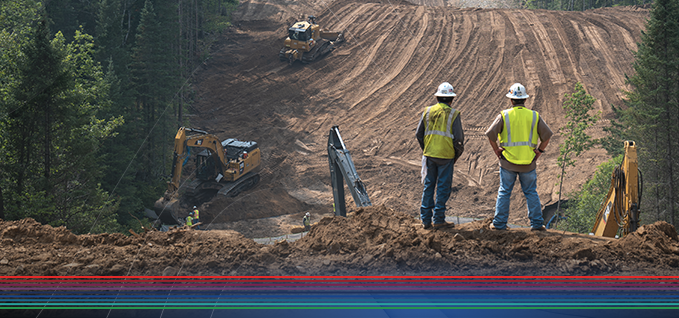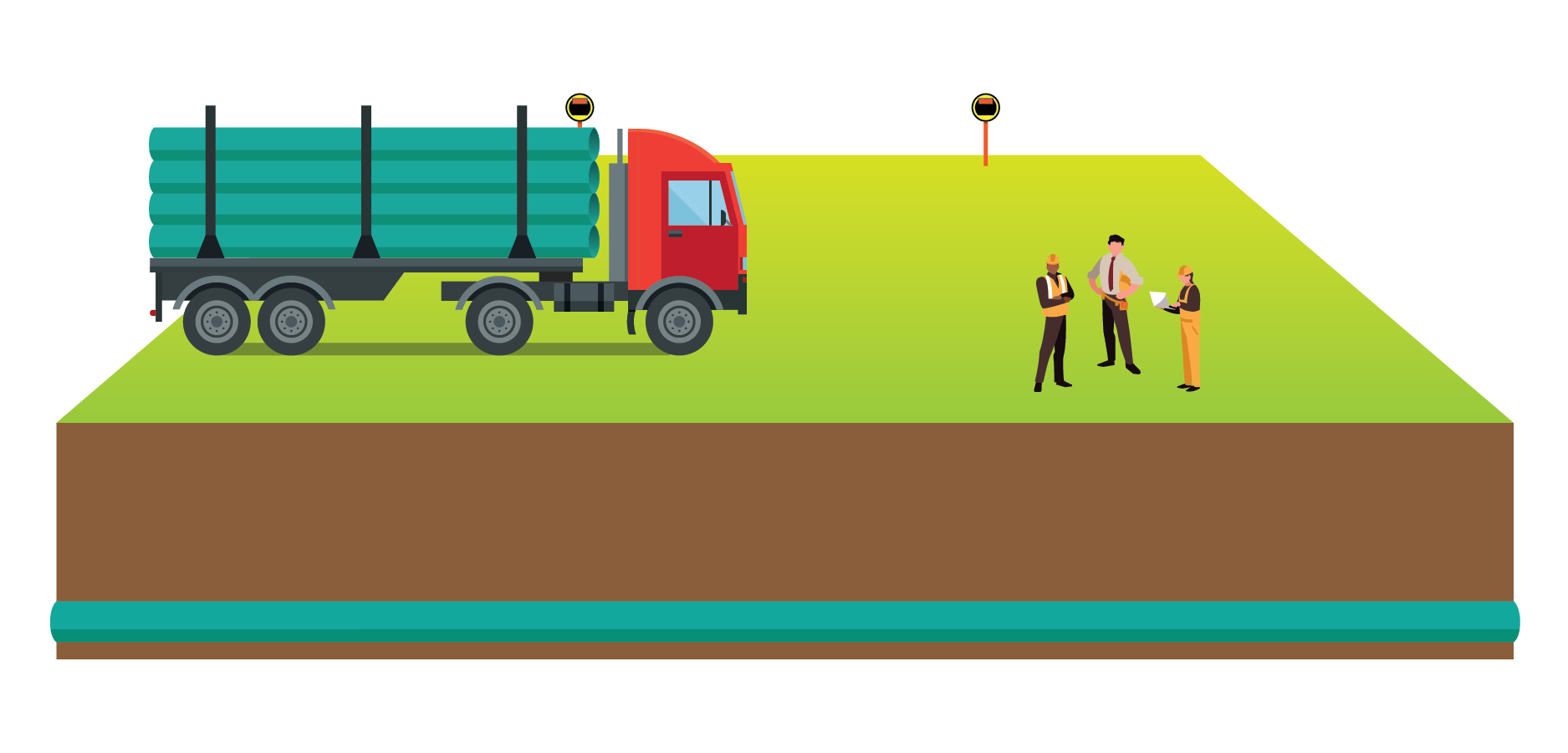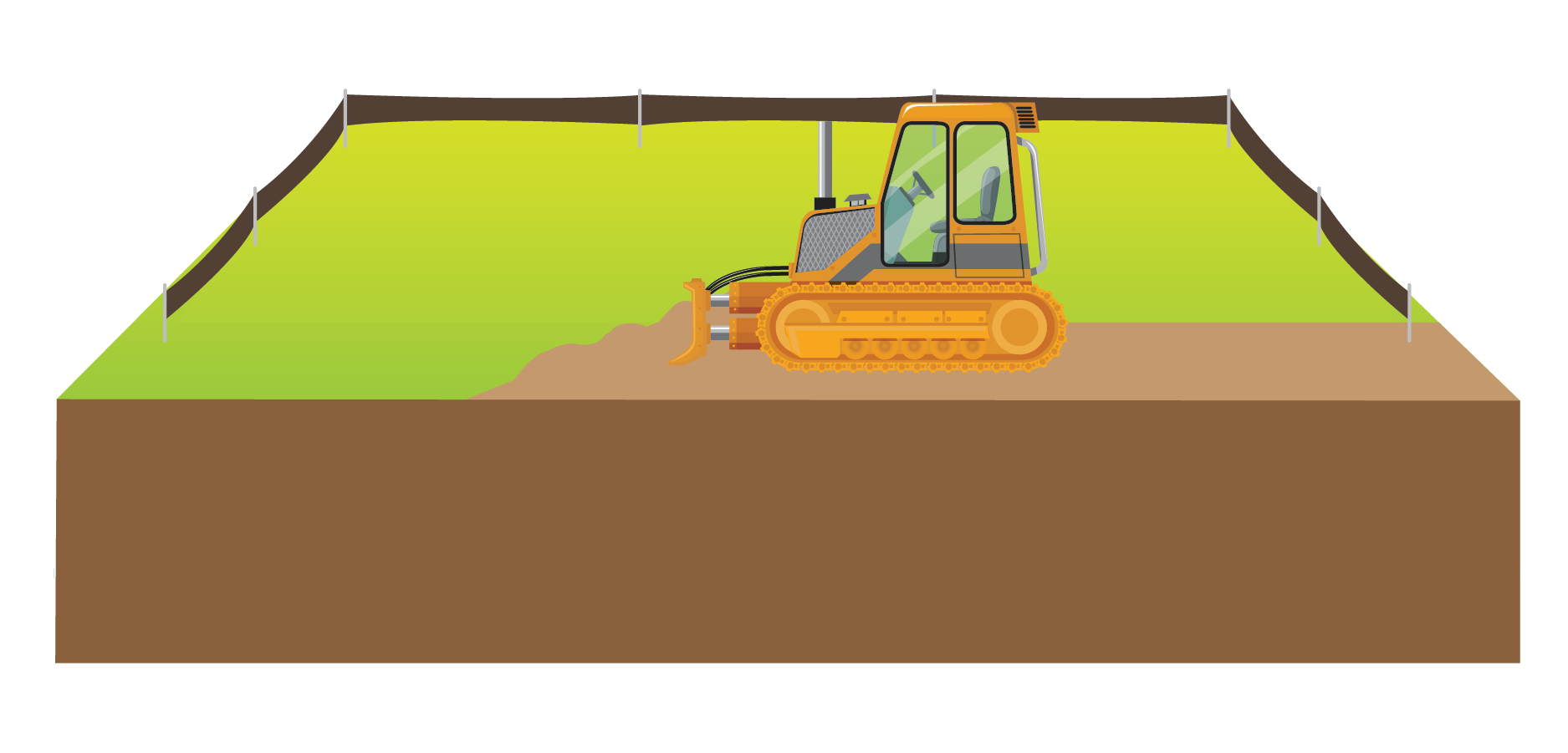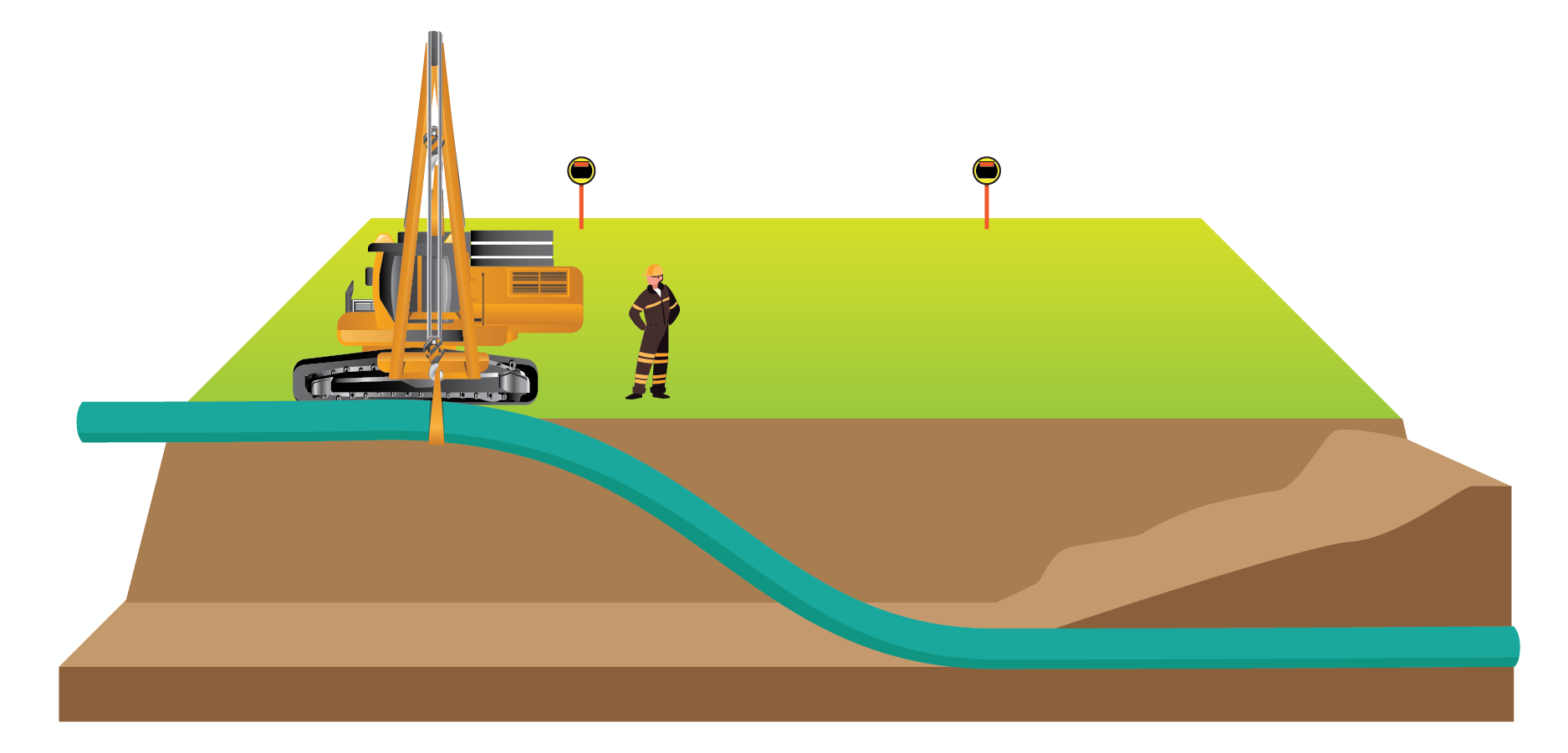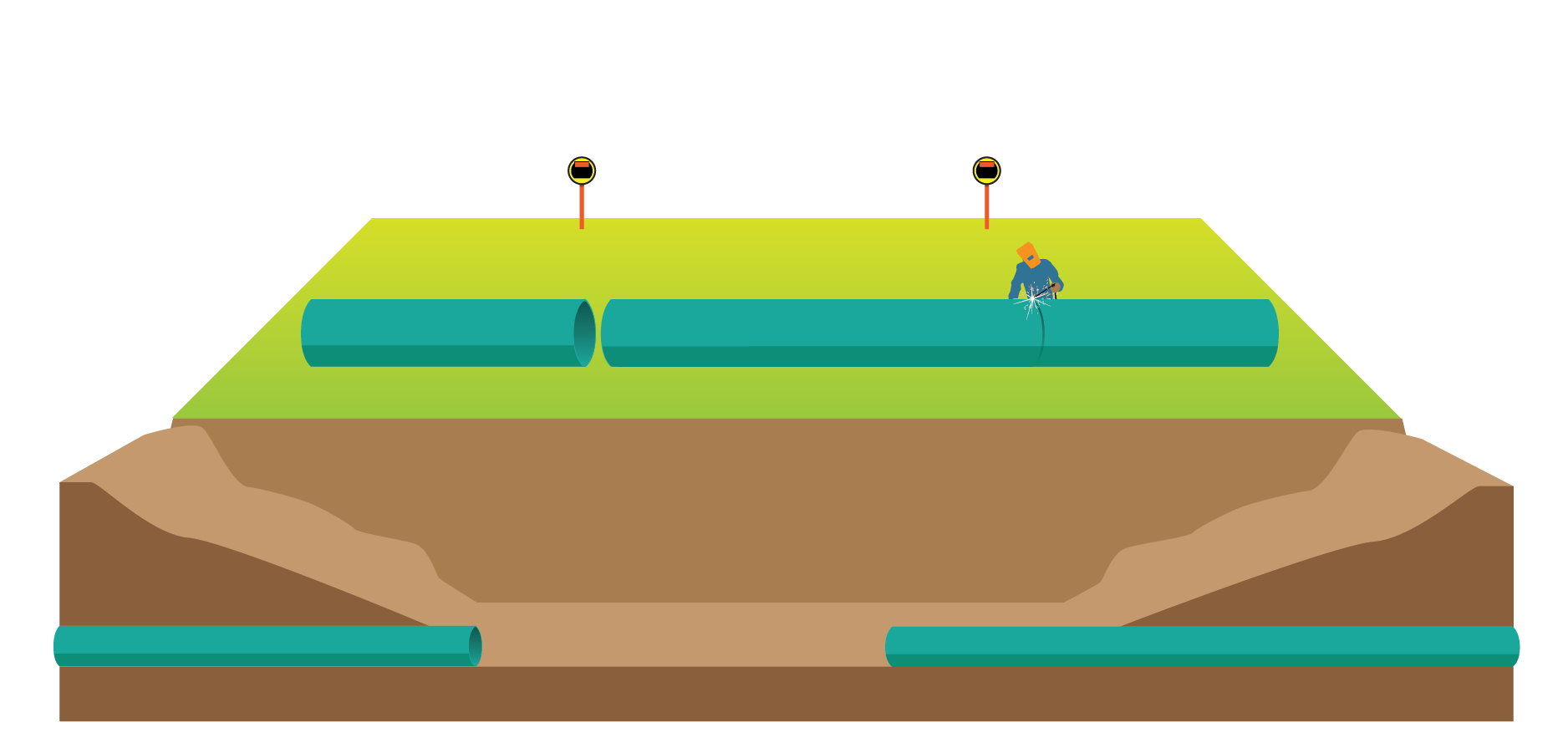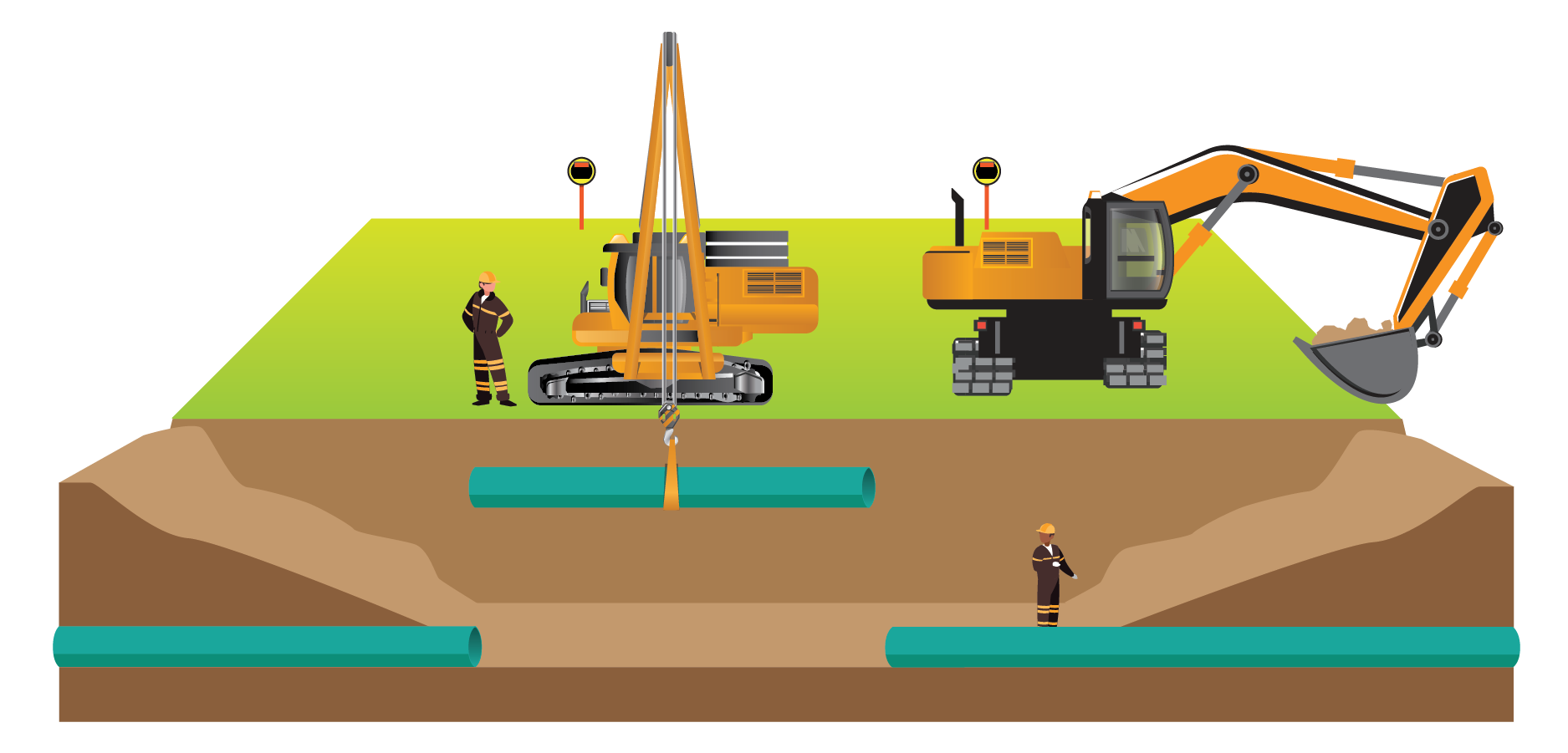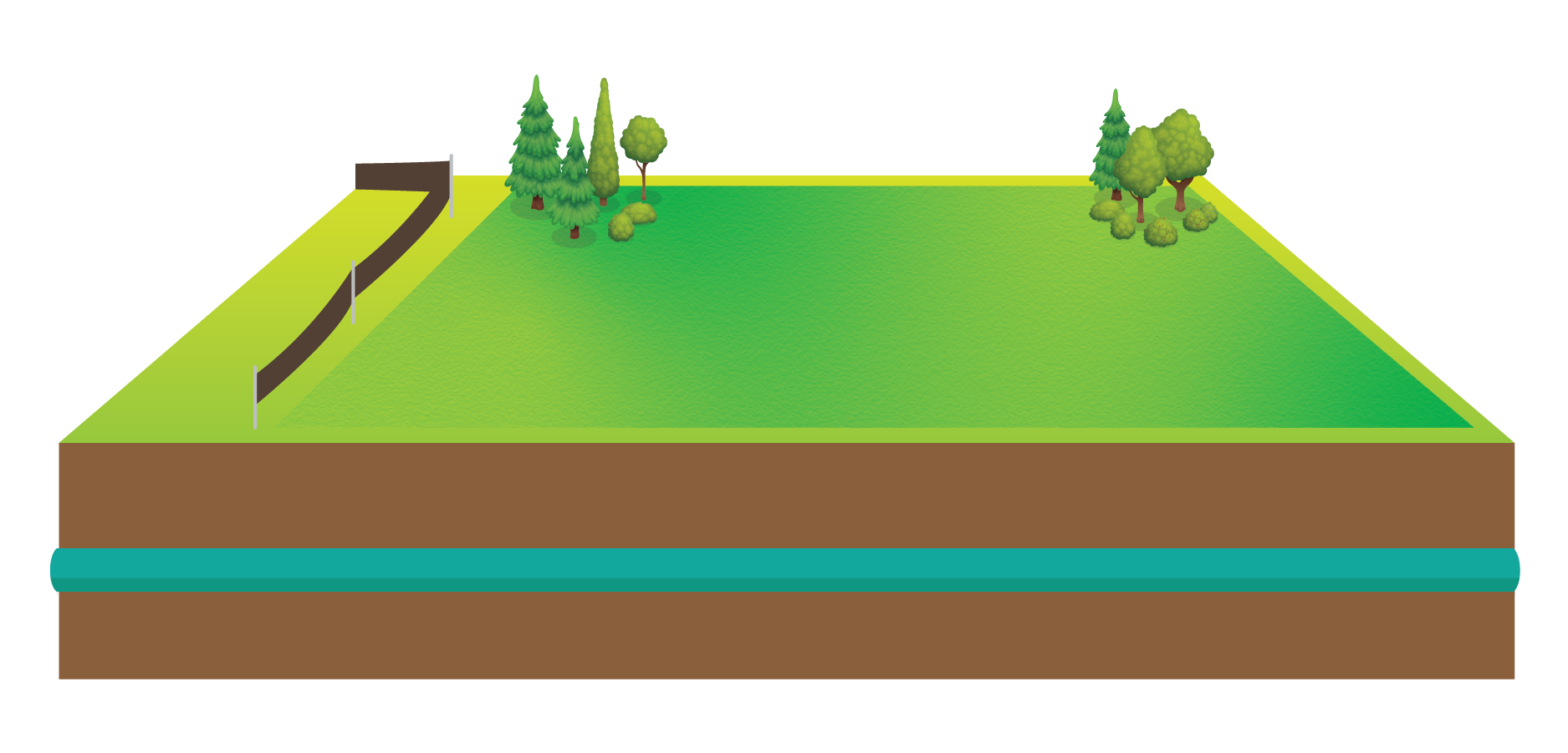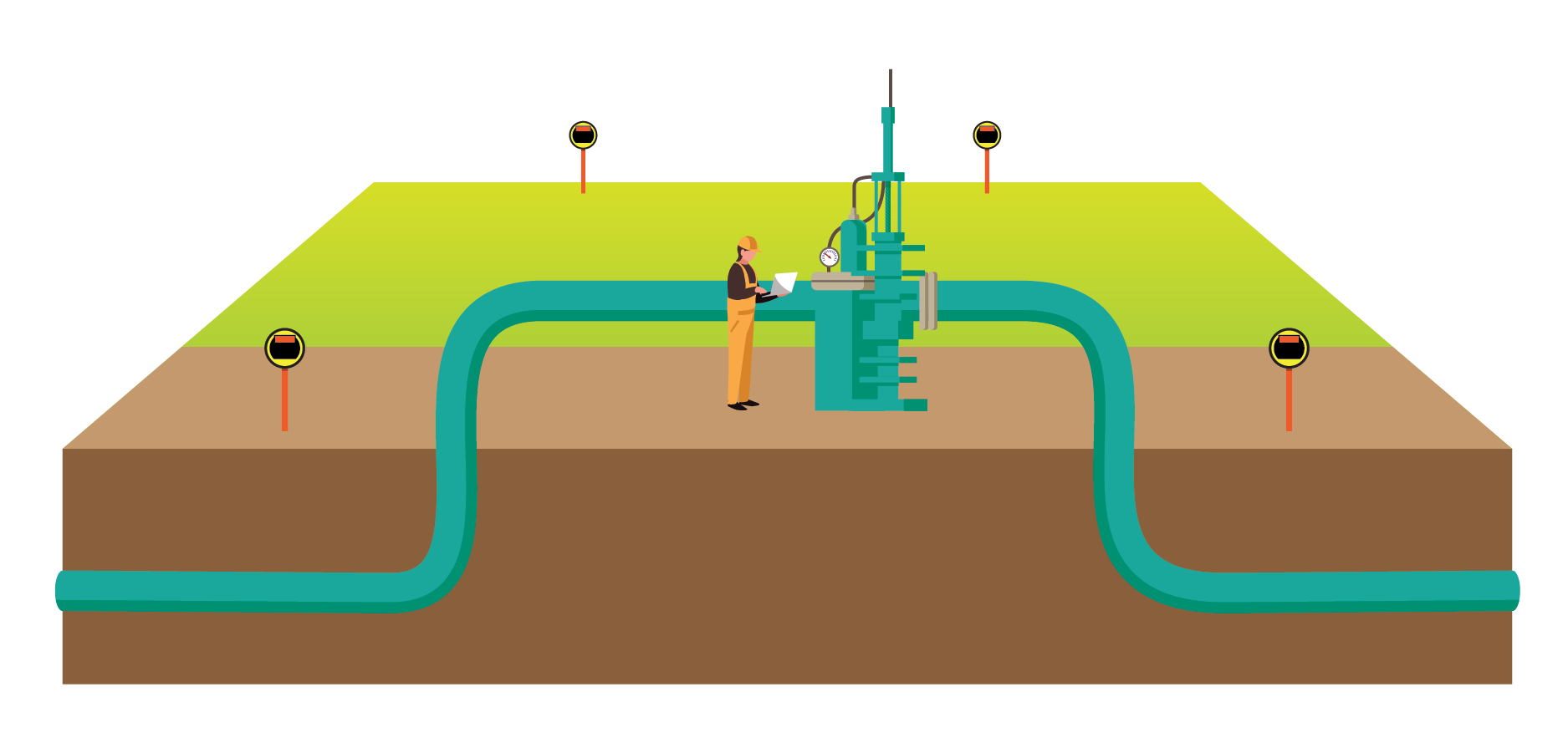ExxonMobil Pipeline Company focuses on safety and quality assurance through every step of the construction process, from project planning and design, to the manufacture and transportation of pipe, assembly and lay-in, and ultimately system start-up and restoration of the right-of-way. Additionally, while working to safely deliver the fuels and energy Americans rely on every day, we aim to minimize our impact on the environment and our neighbors by routing pipelines around sensitive areas where feasible and by pursuing and adopting construction practices that minimize disruptions.
High-quality pipe
- Our specifications for the composition and manufacture of the steel that goes into our pipelines exceed industry standards; we monitor how the steel is manufactured to confirm the mill meets our requirements.
- To verify its initial integrity, each piece of pipe, or joint, is inspected before it leaves the mill.
- U.S. pipe manufacturers are included in our bidding qualification and evaluation process and, as practicable, we strive to source materials, services and contractors locally.
Determining the pipeline route
- We survey the area of the most logical route and conduct environmental and cultural studies to assess possible impacts to existing resources, waterways and other environmentally sensitive areas.
- We try to route our pipelines in and along existing utility, pipeline or transmission line easements, avoiding environmentally sensitive zones and culturally significant areas where feasible.
- If new rights-of-way are required, we attempt to work with property owners to reach mutually beneficial agreements that comply with applicable laws and regulations.
- Pipeline routes are finalized in cooperation with permitting authorities, and construction proceeds only after all necessary regulatory permits and approvals have been secured.
Preparing the right-of-way
- Typically a 50-foot-wide easement is secured to support safe working conditions during construction and subsequent operation of the pipeline.
- Temporary easements of varying widths are also typically agreed to with landowners to provide additional work space during construction where appropriate.
- We strive to limit the impact to the area and strictly adhere to all approved environmental permits.
- The path is graded to prepare for the safe installation of the pipe.
Stringing and bending the pipe joints
- We closely monitor the transport and handling of the pipeline pieces, or joints, as they are laid out, or strung, along the right-of-way to lessen the risk of damage to the pipe during this process.
- To follow the contours of the land or route, we use specially designed equipment to bend the joints of pipe according to industry and our own standards.
Welding the joints together
- Our welders are specially trained and have attained the government and industry certifications required to weld pipe joints together.
- To confirm the quality of the welds, we inspect each one by advanced X-ray or ultrasound technology.
Installing the pipeline
- Backhoes and other equipment typically excavate a trench along the center of the right-of-way to accommodate the pipeline; soil is set aside.
- After the trench is dug out, multiple lift machines are used to carefully lower the pipeline into the trench to reduce the stress on the pipe during this movement.
- The trench is then methodically back-filled with the stored subsoil.
- Where the route crosses roads or certain sensitive areas, such as significant water crossings, horizontal directional drilling (HDD) – an advanced method used in limited situations for installing underground pipelines without digging a surface trench – may be used to pull the pipeline through a previously drilled, subsurface pathway.
- After installation, the pipeline’s integrity is confirmed by a hydrostatic pressure test using pressurized water. Subsequently, an inline inspection using a smart pig may be performed to further assess the pipeline.
Rehabilitating the work areas
- After the completion of construction activities, the removed soil is replaced.
- As much as practicable, the work areas are restored to pre-existing conditions. This rehabilitation abides by industry standards and any agreements with property owners.
Integrating safety systems
- A coating designed to inhibit external corrosion is applied to the pipeline at a specialized shop. The field welds are either wrapped or coated with a similar substance.
- Cathodic protection systems, which disrupt the natural corrosion process, are installed underground to further protect the pipeline from external corrosion.
- Supervisory control and data acquisition (SCADA) systems are installed to provide remote monitoring and control of the pipeline from a centrally located control center.
- Valves are strategically placed along the pipeline path to allow sections of the pipeline to be closed off as needed.
- To enable a quick, effective response to potential incidents, comprehensive emergency response plans are developed and oil spill response equipment is positioned at strategic locations along the pipeline system.
